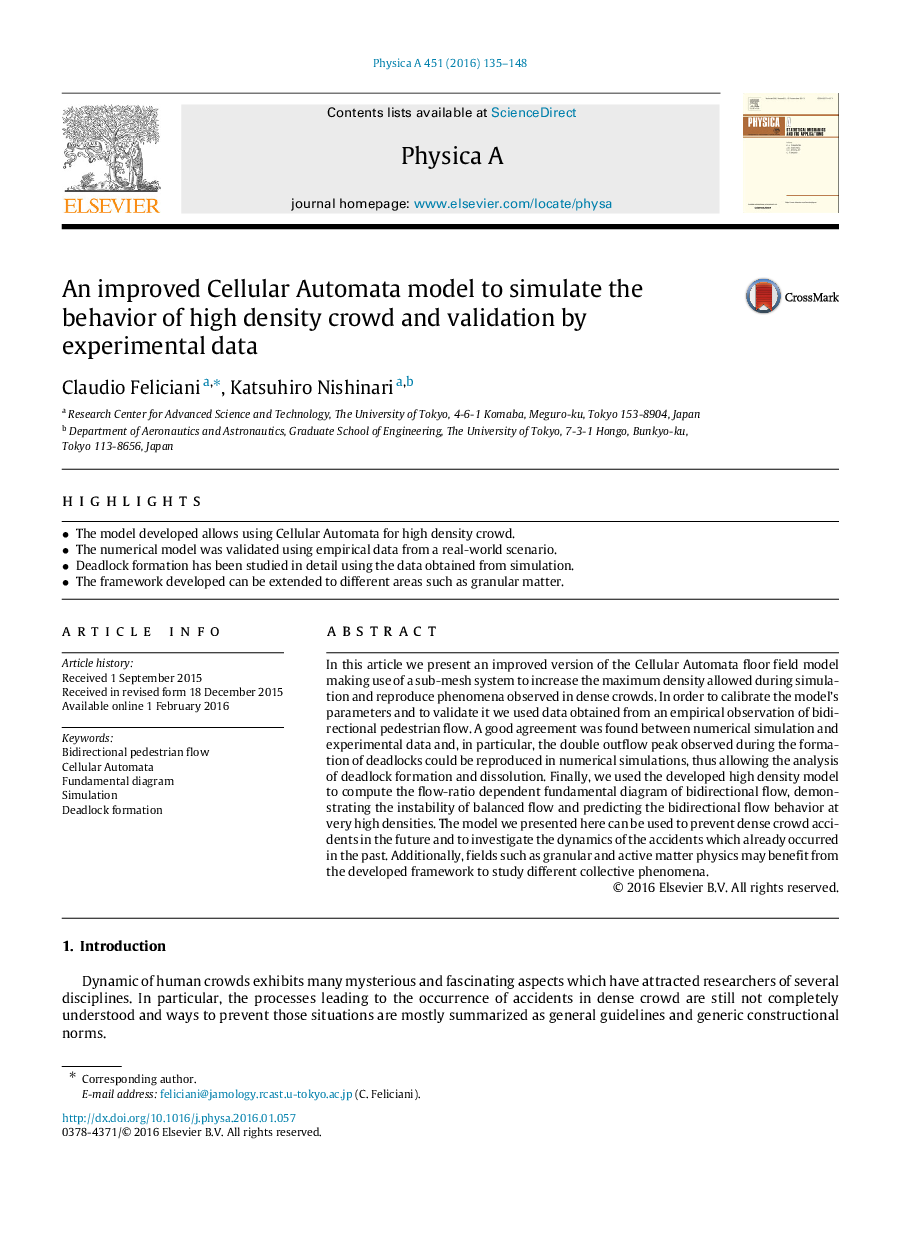| Article ID | Journal | Published Year | Pages | File Type |
|---|---|---|---|---|
| 976612 | Physica A: Statistical Mechanics and its Applications | 2016 | 14 Pages |
•The model developed allows using Cellular Automata for high density crowd.•The numerical model was validated using empirical data from a real-world scenario.•Deadlock formation has been studied in detail using the data obtained from simulation.•The framework developed can be extended to different areas such as granular matter.
In this article we present an improved version of the Cellular Automata floor field model making use of a sub-mesh system to increase the maximum density allowed during simulation and reproduce phenomena observed in dense crowds. In order to calibrate the model’s parameters and to validate it we used data obtained from an empirical observation of bidirectional pedestrian flow. A good agreement was found between numerical simulation and experimental data and, in particular, the double outflow peak observed during the formation of deadlocks could be reproduced in numerical simulations, thus allowing the analysis of deadlock formation and dissolution. Finally, we used the developed high density model to compute the flow-ratio dependent fundamental diagram of bidirectional flow, demonstrating the instability of balanced flow and predicting the bidirectional flow behavior at very high densities. The model we presented here can be used to prevent dense crowd accidents in the future and to investigate the dynamics of the accidents which already occurred in the past. Additionally, fields such as granular and active matter physics may benefit from the developed framework to study different collective phenomena.
